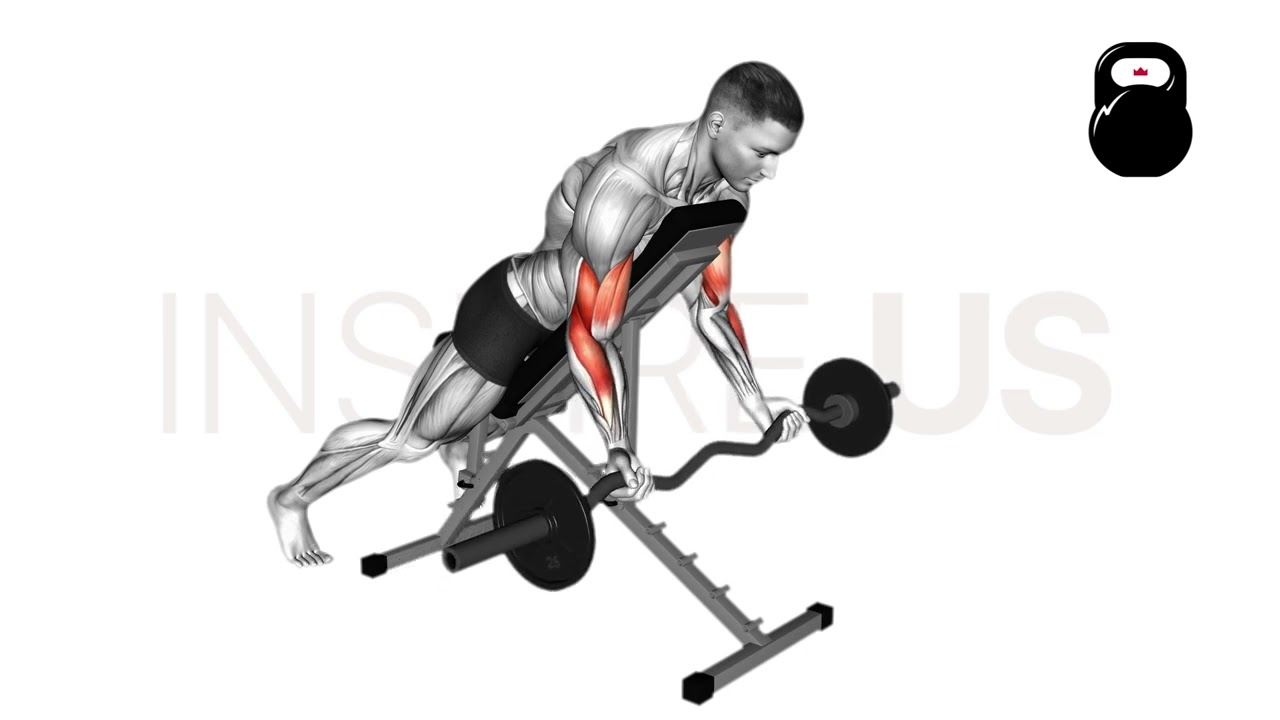Spider Curl: Benefits, Muscles Worked, and More
Spider curls are an unconventional form of bicep curl involving the lifter lying chest-down atop an incline bench as their arms hang beneath the upper body.
While not as common as movements like the incline curl or concentration curl, spider curls offer their own unique set of benefits that are difficult to replicate with any other variation of curl.
What are Spider Curls?
In technical description, the spider curl is a single-joint isolation exercise primarily featuring elbow flexion as its main mechanic.
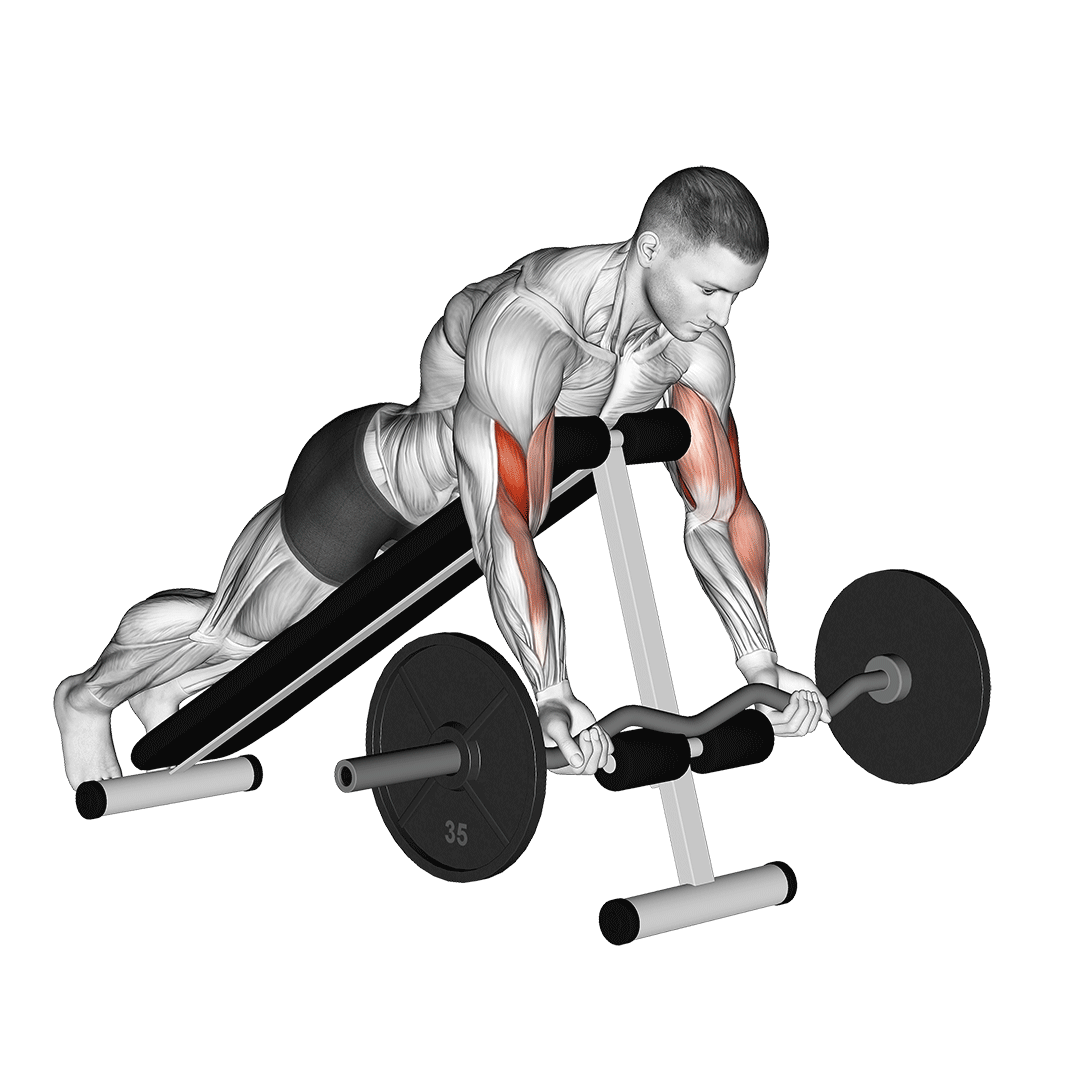
Spider curls are most often programmed for high volume and a low amount of resistance - often as a direct substitute to the conventional bicep curl for more advanced lifters that wish to further train their biceps brachii muscles.
Because spider curls place the torso at an incline atop a bench, a comparatively greater range of motion can be achieved alongside a few other benefits relating to maintaining proper form and stance.
Are Spider Curls the Right Curl for You?
Although spider curls are accessible to even the most novice of weightlifters, they may not be exactly what you need in a training program.
To make the most out of spider curls, your training goals should involve maximizing biceps contraction through a large range of motion. That, or if you have difficulty performing conventional bicep curls due to “cheating” through swinging of the torso or bending the legs.
Of course, it is important to first understand the basics of performing a bicep curl correctly before attempting the spider curl.
How to Do a Spider Curl
To perform a repetition of the spider curl, the lifter will first set an incline bench between 30 and 60 degrees from parallel to the floor. They will lie chest-down atop it, their chosen form of weights held beneath the bench with the arms fully extended. The head should be hanging over the top of the bench.
From this position, the lifter will square their shoulders and proceed to curl the weights.
To do so, the biceps should be contracted and the elbows kept stationary as they bend - drawing the dumbbells towards the back of the bench.
When a full range of motion has been achieved (usually with the forearms touching the biceps), the lifter slowly disengages their biceps and extends their arms downwards once more. This completes the repetition.
What Muscles are Worked by Spider Curls?
Spider curls really only work a single muscle group; the biceps brachii. In particular, the short or inner head of the biceps receives the most attention during a repetition of spider curl.
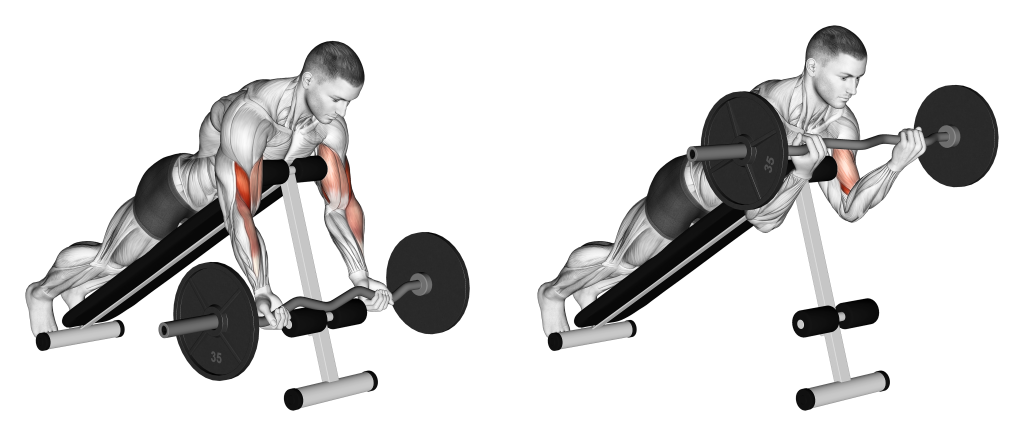
What are the Benefits of Doing Spider Curls?
Spider curls are performed so as to achieve the following benefits.
Comparatively Greater Range of Motion and Time Under Tension
In comparison to conventional bicep curls, spider curls excel when it comes to maximizing range of motion. The biceps are worked to a greater length by the position of the arms beneath the torso - of which will also equate to a lengthier time under tension if tempo is kept dialed in.
A greater range of motion and longer time under tension both equate to more hypertrophy, making the spider curl highly effective as a bodybuilding exercise.
Full Isolation of the Biceps - Especially the Short Head
Unlike other forms of curl, the spider curl entirely isolates the biceps brachii. Other muscle groups are not involved whatsoever.
This ensures that it is truly the biceps themselves that develop as a result of performing the spider curl, and that no energy is wasted by contracting muscles other than the biceps.
Furthermore, lifters seeking greater specificity in their biceps training will find the spider curl emphasizes the inner head of their biceps more than the outer head.
Those with underdeveloped short bicep heads may use the spider curl to help correct this imbalance.
Eliminates the Risk of Cheating
Lifters may occasionally find themselves “cheating” bicep curl repetitions by swinging their torso or generating momentum with their legs. This can negate the benefits of the exercise and potentially lead to injury.
Fortunately, the spider curl does not suffer from the same problems as it locks the lifter’s torso against the bench.
So long as the lifter remembers to keep their upper arms stationary as they perform the exercise, it is unlikely any form of cheating will occur during the spider curl.
Prevents Involvement of the Anterior Deltoids and Pectorals
As touched upon previously, the spider curl does not quite recruit the same stabilizer muscles as the conventional bicep curl.
While the anterior deltoids (and pecs, depending on grip width) will be contracted isometrically in the latter exercise, the spider curl has the bench support the arms so the biceps are the sole muscle being contracted.
Simple, Zero-Impact and Beginner-Friendly
Finally - the spider curl is as accessible as they get. So long as the lifter has healthy elbow and biceps function, there is very little they can get wrong when performing the exercise. No advanced familiarity with resistance training is needed to perform the spider curl safely.
In fact, the spider curl may actually be safer than the conventional bicep curl, as there is a significantly lesser risk of wrist strain due to the angle of resistance involved.
Common Spider Curl Mistakes
Although the spider curl is quite safe and easy to perform, avoid the following mistakes in order to get the most out of its many benefits.
Incorrect Bench Angle
The first mistake to avoid is setting the bench at too low or too high an angle. This can compromise proper form and shift emphasis towards different muscle groups.
When setting the bench too low - as in nearly parallel to the floor - the exercise turns into more of a seal row than a spider curl. While doing so will nonetheless target the biceps, the muscles of the back will overtake them in terms of acting as mobilizer muscles.
Alternatively, inclining the bench too high will negate the benefits of the spider curl by turning the movement into a regular bicep curl.
Ideally, lifters should aim to set the angle of the bench between 30 and 60 degrees to the floor.
Swinging the Upper Arms or Elbows
As is also a mistake in most other curl variations, swinging the upper arms can cause the biceps to be recruited at a lesser intensity. Likewise, moving the elbows will also reduce biceps recruitment and potentially lead to injury.
In both cases, the problem is often poor contraction of the biceps themselves - or that the lifter is simply attempting to lift too much weight.
For the most effective spider curl, it is best for the elbows to remain entirely stationary throughout each repetition. All momentum should be generated from the biceps brachii alone.
Performing a “Drag Curl”
Lifters new to the spider curl may accidentally find themselves performing a “drag curl” by first rowing the weights towards their abdomen before dragging them upwards along the bench.

This is less a result of poor contraction and more of unfamiliarity with the technique of an unconventional exercise.
In order to avoid this, the lifter should seek to keep their elbows stationary but beneath their torso, meaning that they should not be parallel to the sides of the body at any point during the repetition. In addition, the dumbbells themselves should be moved towards the neck, rather than simply curled inwards.
Insufficient Range of Motion
Another highly common mistake seen with all types of curl is an incomplete range of motion.
With a traditional bicep curl, the weight should be moved from a point where the arms are at full extension to an elevation where they are parallel with the shoulders.
While this cue works perfectly well with the standard curl, it is less applicable for spider curls due to the incline of the torso.
Instead, lifters should first begin with the arms fully extended beneath the torso and then seek to curl the bar/dumbbells until it is beneath the clavicles or neck. This will ensure that the biceps are targeted throughout their entire range of action and that no weak points are developed.
Incorrect Tempo/Excessively Fast Repetitions
In order to ensure a sufficient time under tension is achieved, the spider curl should be performed with a slow and controlled tempo throughout each repetition.
While it will depend between lifters, each repetition should take somewhere between 1-2 seconds each. Achieving a sufficient time under tension will help stimulate blood flow to the biceps and ensure that the fibers are sufficiently damaged enough to induce muscular hypertrophy.
For the more advanced, the concentric section of the movement may be performed in a slightly faster manner, so long as the eccentric portion is subsequently stretched out to compensate.
Alternatives to the Spider Curl
If the spider curl isn’t quite what you’re looking for, try the following substitute exercises out.
Incline Curls
Incline curls are practically the counterpart to spider curls, as rather than placing the lifter chest-down, they instead incline the torso with the chest facing outwards.
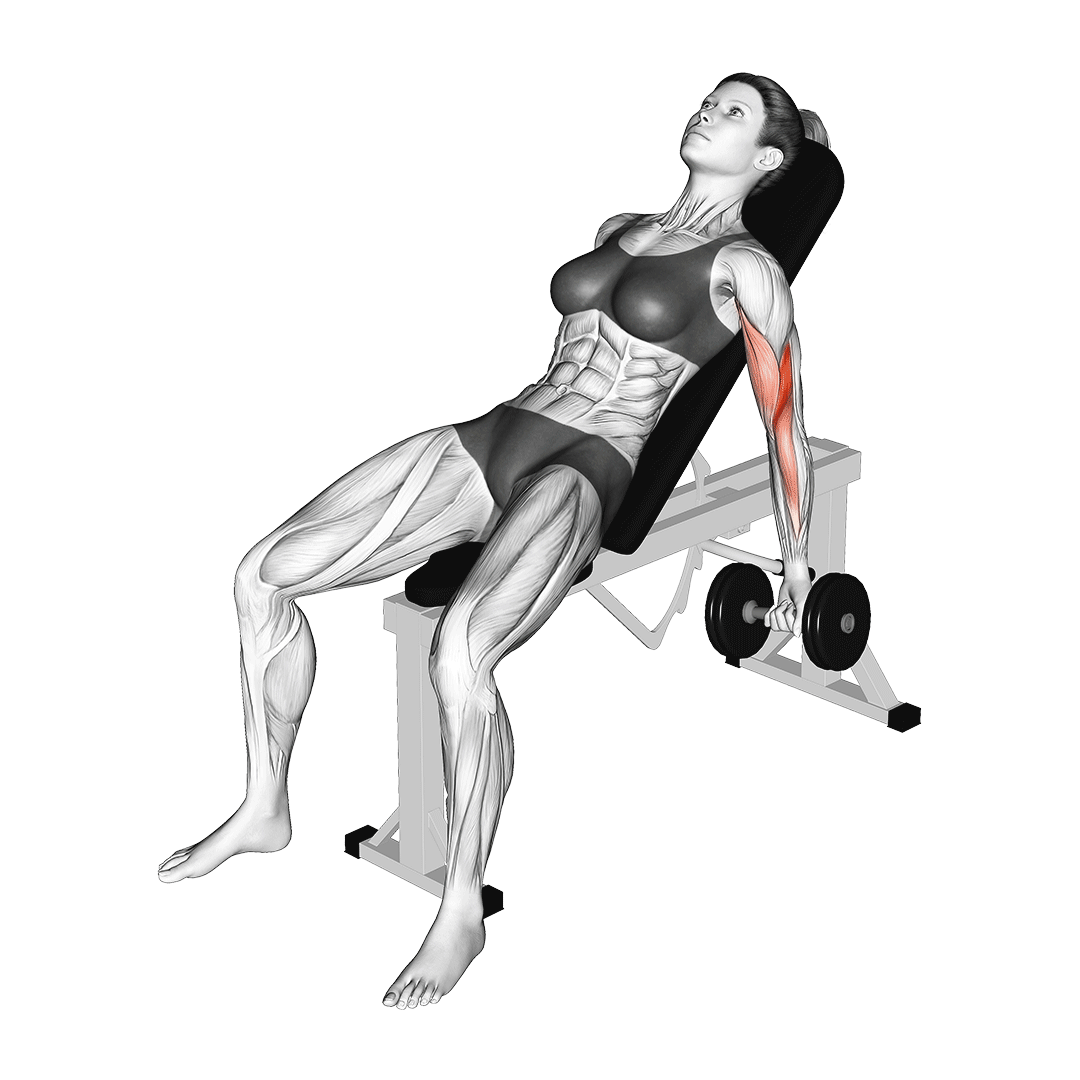
Requiring the same equipment and often being performed for the same purpose, the sole distinction between the spider curl and incline curl lies in the positioning of the arms.
Rather than hanging beneath the torso, the elbows will nonetheless remain close to the sides of the body during an incline curl. This can make maintaining proper form easier and allow for a more even contraction of both biceps brachii heads.
Concentration Curls
Concentration curls share the same benefit of greater biceps isolation with the spider curl.
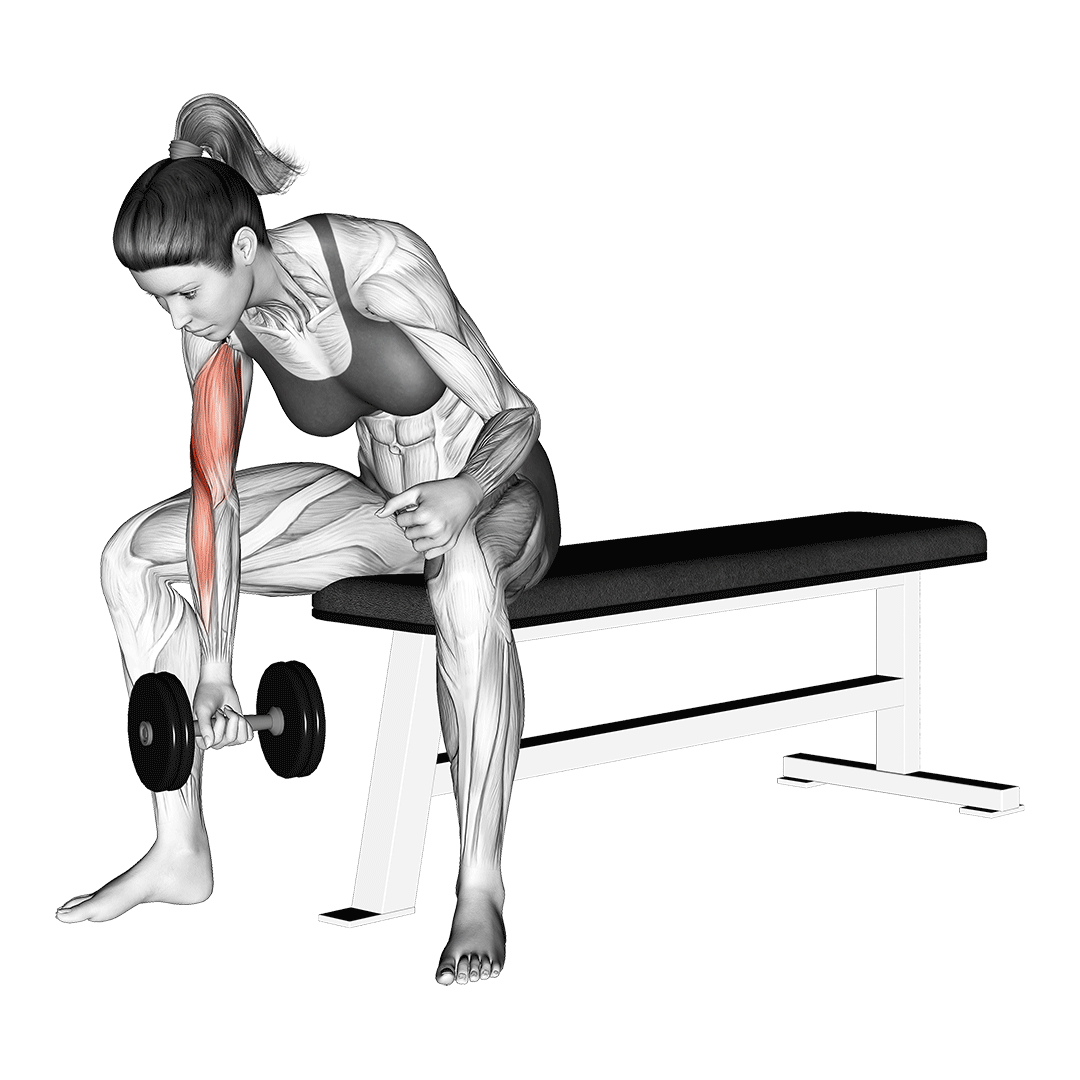
However, rather than inclining the torso, concentration curls are instead performed in a seated manner with one elbow placed in the space between the thighs.
This creates a strictly unilateral biceps isolation exercise that requires no incline bench to perform - making it more convenient than the spider curl in certain aspects.
Bent Over Curls
Bent over curls are exactly as they sound; bicep curls performed with the torso bent over at the hips.

Like the spider curl, this places the arms beneath the torso and increases the range of motion in which the biceps are worked. However, bent over curls do not have the support or benefits of using an incline bench, and as such can place the lower back at risk if performed incorrectly.
Bent over curls are best used as a spider curl alternative when no incline bench is present or if the lifter finds the pressure against their chest to be uncomfortable.
Frequently Asked Questions (FAQ)
Why are Spider Curls so Hard?
Spider curls are not meant to be difficult. If you find them hard to perform, try increasing the incline of the bench and reducing how much weight you are lifting. Ensure proper form is prioritized above all.
Are Spider Curls the Most Effective Curl?
Not necessarily - but spider curls are indeed a highly effective bicep curl variation. If you have difficulty working the biceps through a full range of motion or find yourself cheating your last few repetitions, then the spider curl is the right movement for you.
Should Spider Curls be Heavy or Light?
Spider curls should be performed with a light amount of weight - even lighter than you would use with regular bicep curls. Because your biceps don’t have the support of the deltoids or other muscles, you won’t be able to lift as much weight.
A Few Reminders
Although the spider curl is quite safe and undeniably effective, remember that it isn’t the sole bicep curl of its kind. If you find it uncomfortable or not intense enough, there are plenty of spider curl alternatives to choose from.
Furthermore, if substituting conventional bicep curls with spider curls, remember to reduce how much weight you are lifting in order to compensate for the greater isolation of the biceps.
References
1. Larson, Rhys. (Feb 28, 2022) “ Beastly Body: The Essential Guide to Biceps, Calves, and Glutes Growth and Development.” Amazon Digital Services LLC - Kdp 2022 N.p.: Beastly Body, 2022. ISBN: N/A
2. Marcolin G, Panizzolo FA, Petrone N, Moro T, Grigoletto D, Piccolo D, Paoli A. Differences in electromyographic activity of biceps brachii and brachioradialis while performing three variants of curl. PeerJ. 2018 Jul 13;6:e5165. doi: 10.7717/peerj.5165. PMID: 30013836; PMCID: PMC6047503.

